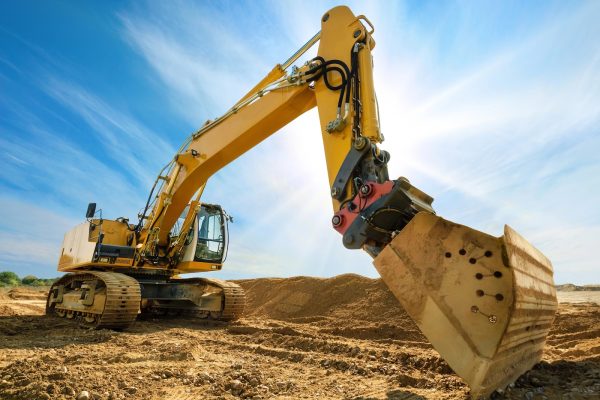Earth moving, a fundamental component of urban development and infrastructure projects, plays a significant role in shaping the landscape of Brisbane. However, the consequences of such activities extend beyond the construction site, impacting the environment in various ways. Understanding these environmental impacts is crucial for ensuring sustainable development and safeguarding Brisbane’s natural heritage. In this article, we delve into the intricate relationship between earth moving and the environment, shedding light on the challenges and opportunities faced by Earth Shifters in Brisbane.
Overview of Earth Moving
Earth moving encompasses a range of activities, including excavation, land clearing, and construction, aimed at altering the terrain for various purposes. In Brisbane, Earth Shifters undertake these tasks to facilitate infrastructure development, accommodate urban expansion, and support economic growth. From building roads and bridges to erecting residential and commercial complexes, earth moving projects are omnipresent in the city’s evolving landscape.
Environmental Impacts of Earthmoving in Brisbane
Earthmoving in Brisbane exerts multifaceted environmental impacts, affecting soil, water, air quality, biodiversity, ecosystems, and the overall aesthetic and ecological integrity of the region.
1. Soil Erosion and Sedimentation:
- Extensive land clearing and excavation lead to soil erosion, compromising soil fertility and water quality.
- Sedimentation in water bodies affects aquatic ecosystems and disrupts natural habitats.
2. Habitat Destruction:
- Deforestation and habitat fragmentation result in the loss of native vegetation and wildlife habitats.
- Reduced habitat availability threatens the survival of indigenous species and diminishes biodiversity.
3. Loss of Biodiversity:
- Urbanisation and infrastructure development encroach upon natural habitats, reducing biodiversity.
- Declining biodiversity undermines ecosystem resilience and compromises ecosystem services.
4. Water and Air Pollution:
- Runoff from earthmoving sites carries pollutants into waterways, contaminating aquatic environments.
- Dust and emissions from construction activities contribute to air pollution, affecting air quality and public health.
5. Disruption of Ecosystems:
- Earthmoving activities disrupt ecosystems, altering natural processes and ecological balances.
- Fragmentation of habitats isolates wildlife populations, limiting their ability to migrate and adapt to changing conditions.
6. Noise and Visual Pollution:
- Earthmoving operations generate noise pollution, impacting surrounding communities and wildlife.
- Unsightly construction sites detract from the aesthetic appeal of the landscape, diminishing quality of life for residents.
Addressing these environmental impacts requires proactive measures and sustainable practices to minimise ecological damage and promote environmental stewardship in Brisbane’s development projects.
Mitigation Strategies
In response to growing environmental concerns, Earth Shifters in Brisbane are implementing various mitigation strategies to minimise the adverse impacts of earth moving activities. Erosion control techniques, such as the use of sediment barriers and vegetative cover, help prevent soil erosion and sedimentation, preserving soil fertility and water quality. Habitat restoration efforts focus on reestablishing native vegetation and wildlife habitats in areas affected by land clearing, promoting biodiversity conservation. Additionally, sustainable land management practices, such as soil conservation and water harvesting, aim to enhance ecosystem resilience and mitigate the effects of climate change.
By embracing these mitigation strategies, Earth Shifters in Brisbane can mitigate the environmental impacts of their activities while promoting sustainable development and environmental stewardship.
Community Engagement
Community engagement plays a pivotal role in addressing environmental concerns related to earth moving in Brisbane. Public participation in decision-making processes empowers local residents to voice their concerns and advocate for sustainable practices. By fostering dialogue and collaboration between Earth Shifters, government agencies, and community stakeholders, Brisbane can develop holistic solutions that balance development needs with environmental preservation.
Earth Shifters in Brisbane must actively engage with the community, seeking input and feedback to ensure that their projects align with the city’s sustainability goals and meet the needs of present and future generations.
Conclusion
The environmental impacts of earth moving in Brisbane are undeniable, but they are not insurmountable. By acknowledging the interconnectedness of human activities with the environment and embracing sustainable practices, Earth Shifters can minimise their ecological footprint and contribute to the city’s long-term prosperity. Through robust regulation, effective mitigation strategies, and meaningful community engagement, Brisbane can achieve a harmonious balance between development and environmental conservation. As stewards of the land, it is incumbent upon Earth Shifters in Brisbane to adopt a proactive approach towards sustainable development, safeguarding the city’s natural heritage for generations to come.




